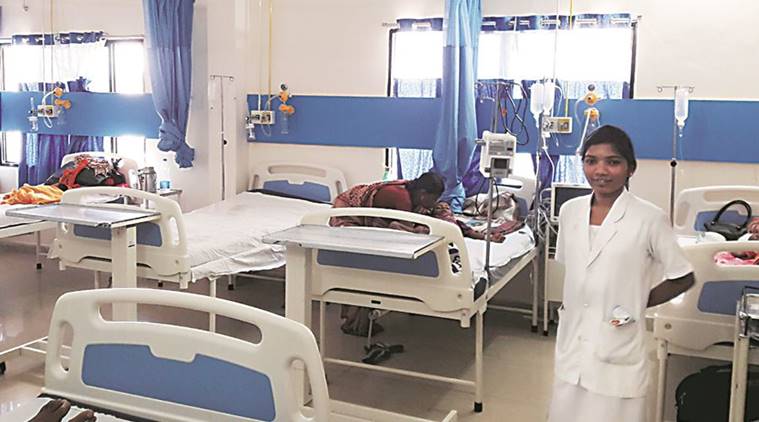
Doctors heed Collector’s SOS. Shows better way than forced rural service
It’s been ten months since the Chattisgarh government came out with incentives for doctors to join hospitals in Naxal-dominated regions, a move that was followed by an SOS from the Bijapur District Collector, Dr Ayyaz Tamboli on social media. The SOS invited medical practitioners to the district hospital. Since the SOS was issued, the number of doctors in the hospital has tripled from eight to 24. The number of nurses has also gone up- from 10 to 36.
Bijapur is more or less a small town that is Naxal-dominated. You could see huge government hoardings featuring pictures of people killed by Maoists-meant to serve as a notice of caution to the people. The district hospital stands almost right in the center of this town. The hospital boasts up-to-date equipment, two operating theatres and even a blood bank. As for the medical personnel, they have a pathologist, two gynaecologists, two paediatricians, an anaesthesia specialist, a general surgeon and an ophthalmologist. All of them joined the hospital within the last one year.
To remedy the acute shortage of doctors in Naxal-affected areas of Chattisgarh, a differential package system was announced in June 2016- the more inaccessible the regions, the more the pay would be. The pay for doctors who chose to work in places like Bijapur could be as high as Rs 2.5 lakh a month.
Lack of decent accommodation, schools etc. were impediments for the state in attracting doctors. They then created transit hostels for families and if a doctor requires it, they would put in a word with good schools, according to R Prasanna, Director, Health Services.
According to the District Collector, Mr. Tamboli, mere days after the SOS, he was flooded with calls. He said that 46 specialists and 66 MBBS doctors responded. Every call was attended directly, and negotiations were held. He said that the doctors whom the hospital eventually got are mostly young, first-generation doctors who want to make a difference.
To aid the doctors and the patients, an ICU, a modern mortuary, two operation theatres, multiple waiting rooms and a blood bank were all set up in the past year. And on January 30, 2017, a maternal and child healthcare unit with a 50 bed capacity also came into being. The hospital is completely disabled-friendly. For emergency victims, there also exists a separate approach.
As per Tamboli, the blood bank is one of the major achievements. Most of the locals are too anaemic or have other complications, he said. The hospital used to rely heavily on CRPF personnel for blood. The blood bank solves this issue- thanks to a system by which every government department donates blood once a month on a rotational basis.
A doctor’s experience
One of the first new doctors to arrive in Bijapur was Dr Arun Choudhury. In fact, he reached there about 18 months ago- before the SOS went out. According to the doctor, he was encouraged for the move by his head of department at AMU. While in the final year of gynaecology, he drove the 1,400 km distance from Aligarh to Bijapur. The month being July, it was raining heavily and Choudhary was “spellbound” by the beauty of nature.
“At the hospital, one of the doctors sought me out, saying there was an emergency. There was a mother in obstructed labour and her heart rate had dropped. I operated on the mother, without even being a regular doctor, and in some time, there was a healthy baby in my arms. There was no way I could leave after that. I got more batchmates from the AMU to join me too,” he said.
His wife, Pratibha now teaches at a school in Bijapur. She jokes about Arun’s irregular timings. “He works long hours and there is always one operation after another. On Fridays, he takes classes for the nurses, but those go long beyond the stipulated hour,” she says.
Chaudhdhary sums up the joy of working in these words: “There are so many health issues here, and so much space to learn. There are constant complications like anaemia, malnourishment, scabies, poor sanitation, malaria and sickle cell anaemia. There is no greater happiness than working in an area that needs it the most.”
Image credits: indianexpress.com